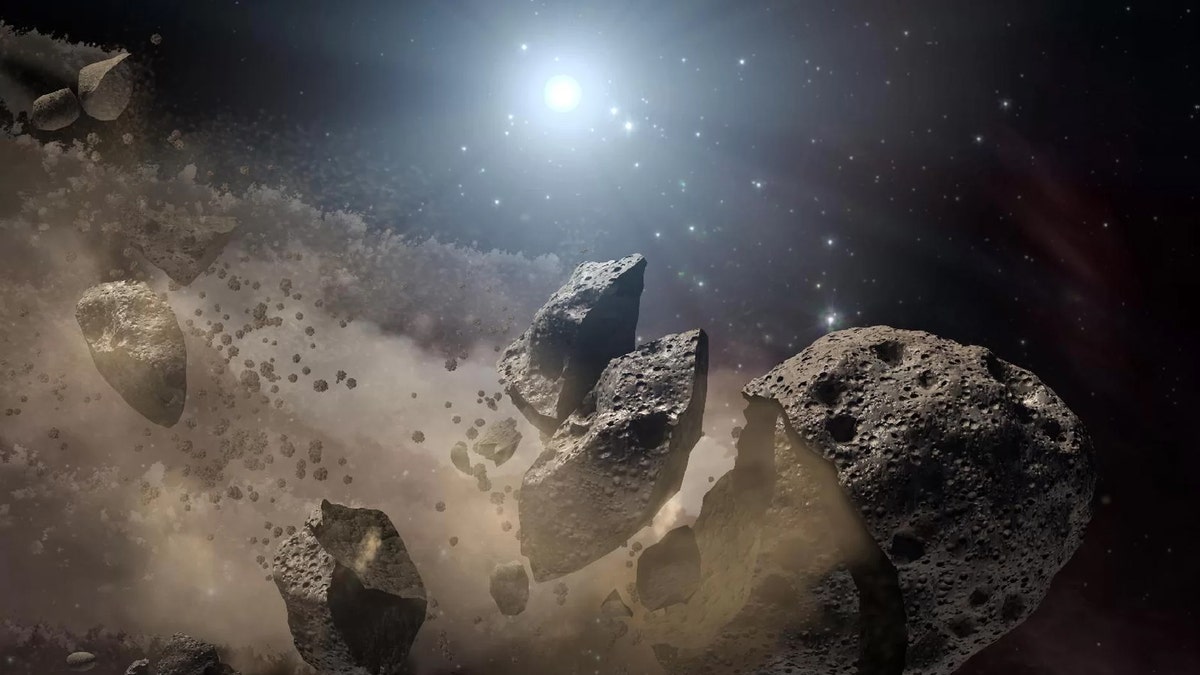
Researchers have found that a family of asteroids that dates back to the solar system's early days. Here is an artist's concept of a broken-up asteroid. The leftover building blocks of the solar system, called planetesimals, were similarly fragmented, and they drifted apart over time. (Credit: NASA/JPL-Caltech)
Terrified of an asteroid hitting Earth and wiping us all out? Fret not: NASA has a plan.
U.S. space scientists have drawn up official plans for how to deal with incoming asteroids that could devastate our planet.
It's a spacecraft called HAMMER, and it stands for Hypervelocity Asteroid Mitigation Mission for Emergency Response.
It was devised by top experts, including Nasa, the National Nuclear Security Administration (NNSA), and two Energy Department weapons labs, according to Buzzfeed.
The spacecraft has two ways of dispatching an asteroid collision threat.
The first involves hitting the asteroid, and then steering it off-course so it doesn't end up hitting Earth.
The second – and more dangerous – would see the HAMMER detonating its on-board nuclear warhead to change the asteroid's course.
"If the asteroid is small enough, and we detect it early enough, we can do it with the impactor," explained physicist David Dearborn.
"The impactor is not as flexible as the nuclear option when we really want to change the speed of the body in a hurry."
That could be useful in 2035, when scientists say there is a 1 in 2,700 chance the Bennu asteroid will hit us.
The space boulder is currently circling the sun at 63,000 mph, and has a very slim chance of plummeting into Earth.
But sadly, NASA's new plans don't necessarily mean that the HAMMER spacecraft will ever be built.
There's also no costing estimate for HAMMER yet, which makes the plans even more tenuous.
Scientists plan to present the asteroid-blasting system at a conference for asteroid experts in Japan this May.
If that goes well, it's much more likely that we'll see HAMMER become a reality.
This story originally appeared in The Sun.




















